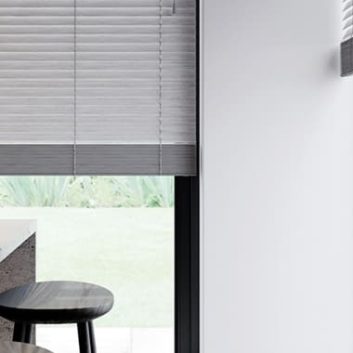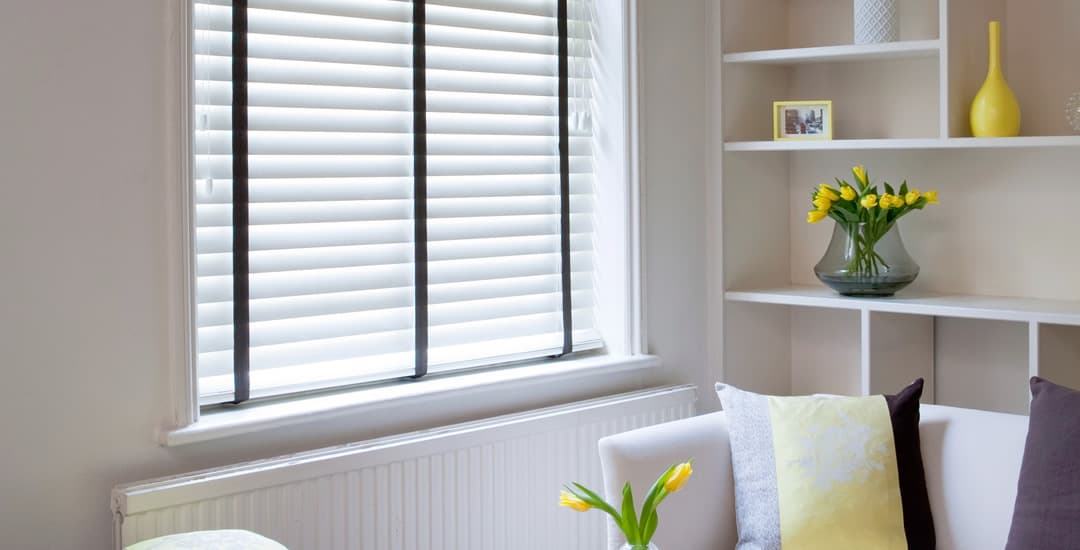
If you buy good quality, modern made-to-measure faux-wood blinds, you’re very unlikely to find that they turn yellow. However, older faux-wood blinds and those of lower quality might begin to yellow over time; but in the vast majority of cases, this is restricted to white faux-wood blinds only, and is still fairly unlikely to happen.
This blog post will explain why faux-wood blinds could/would turn yellow over time, and what, if anything, you can do to prevent this.
Why do faux-wood blinds turn yellow (if they ever do)?
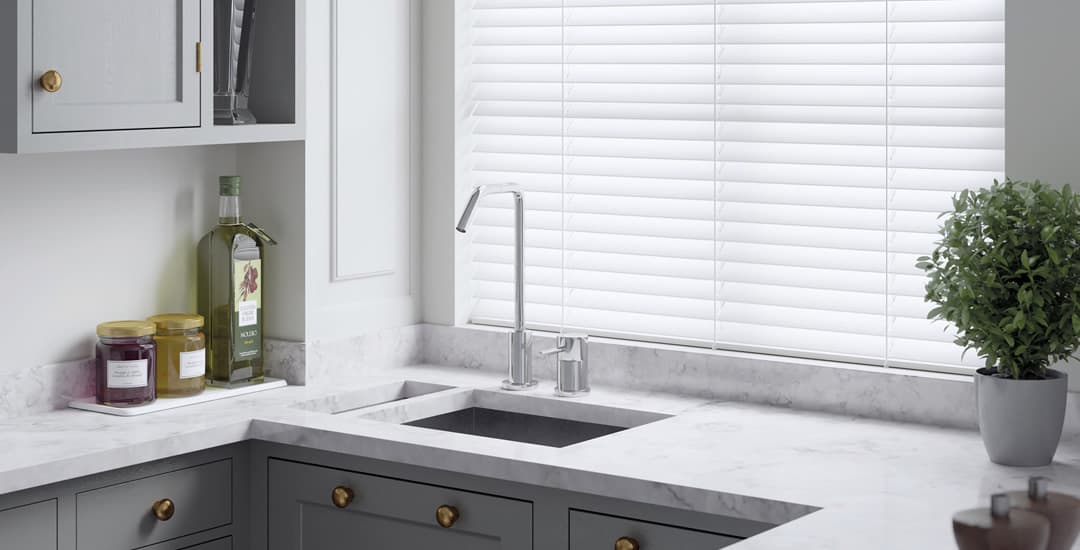
White faux-wood blinds may theoretically turn yellow over the long term due to sun exposure, but this is by no means a given. Long-term exposure to the sun has an impact on more or less any item of any colour eventually; white-coloured goods will yellow, while darker colours may fade.
That said, most white faux-wood blinds will never turn discernibly yellow, even if they’re continually exposed to direct sunlight, so this isn’t generally a potential problem worth considering or worrying about.
There are a couple of other situations in which a faux-wood blind might theoretically turn yellow that are worth mentioning too, and this could happen to more or less any lighter-coloured faux-wood blind, not just white ones.
The first of these is more or less self-evident; a white or light-coloured faux-wood blind that’s exposed to cigarette smoke will probably begin to get a dingy nicotine tinge over time; this isn’t due to the blind itself but of course, the smoke. If your blind is beginning to turn yellow thanks to being coated with a thin film of nicotine, other surfaces in the room will also suffer the same fate (albeit this may not be so obvious if they’re darker coloured).
Also, if you’re using faux-wood blinds in a kitchen, vaporised cooking fats in the air may build up into a yellowish, tacky film, which will also tend to attract dust to stick to it, further compounding the ick.
This is most likely to happen if your kitchen doesn’t have great ventilation/extractor fans and cooking vapour lingers in the air, and/or if your blind is very close to the source of your frying to the point that splatter or back-splash hit the blind.
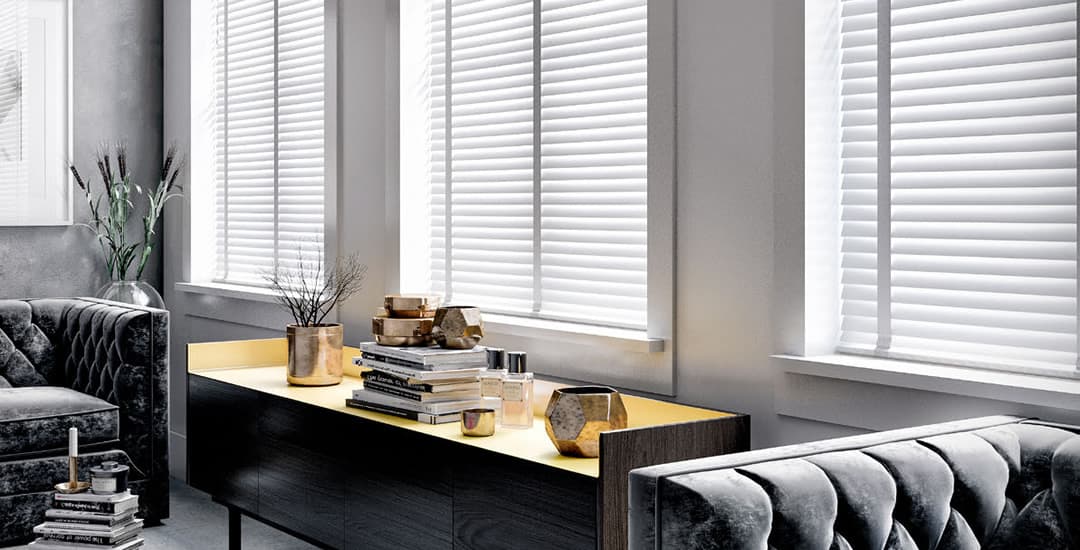
Do white blinds go yellow eventually regardless of type?
Anything white (regardless of material and regardless of whether or not it is a blind) will eventually begin to yellow if it spends a long time in direct sunlight. This will usually take many years, and a lot of items (good quality faux-wood blinds included) are actually treated with a special UV protective agent specifically in order to prevent or rather, greatly slow down the rate at which this happens.
The same is true of other styles of white blinds; if you buy good quality ones from a reputable maker, they should be treated to protect them against UV yellowing.
Ultimately, this means that even if you keep your faux-wood blinds (or other white blinds) for north of a decade, they’re far more likely to end up being replaced simply because you eventually fancied a change than they are to need the bin due to having turned an offensive shade of yellow.
Do wooden blinds discolour in darker shades?
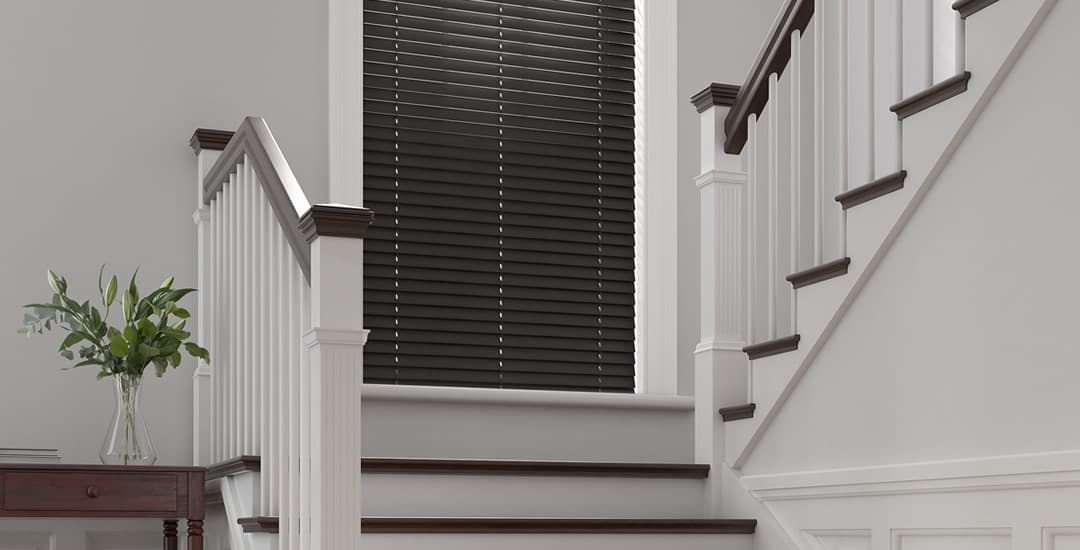
It is only white faux-wood blinds that can potentially or theoretically yellow from sun exposure; this issue isn’t a problem for any other colour, even very light ones. Even cream faux-wood blinds won’t yellow, but they might change hue to a degree, which is only likely to be noticeable at all if your blind is almost always left in the same position so that parts of it change shade while others remain the same as they’re not exposed to the sun to the same extent.
Darker coloured faux-wood blinds may fade to a lighter shade over many years of sun exposure, but again, the UV treatment agent we use to prevent this tends to mean that this is highly likely to be an issue unless you keep the same set of blinds until they reach legal drinking age! Again, if your blinds are always kept in the same position, the fading might be localised and so, more noticeable due to the contrast between this and the adjoining areas of the blind.
It is also worth noting that some cleaning products can potentially damage the finish of faux-wood blinds, which in turn can cause discolouration. This is why you should always check the usage labels of any new product, test it on a small, inconspicuous area of the blind first, and steer clear of harsh or abrasive cleaning agents.
One example of this that I mentioned in another blog post occurred when we experimented to see what happened if we used The Pink Stuff to clean blinds, and this quickly damaged the veneer of our sacrificial faux-wood blind.
Ultimately, even if your faux-wood blinds are really filthy, moderately hot water and a simple detergent like washing up liquid is all you should ever need to use to clean them, so this issue never really needs to come up at all.
How do I keep my blinds from turning yellow?
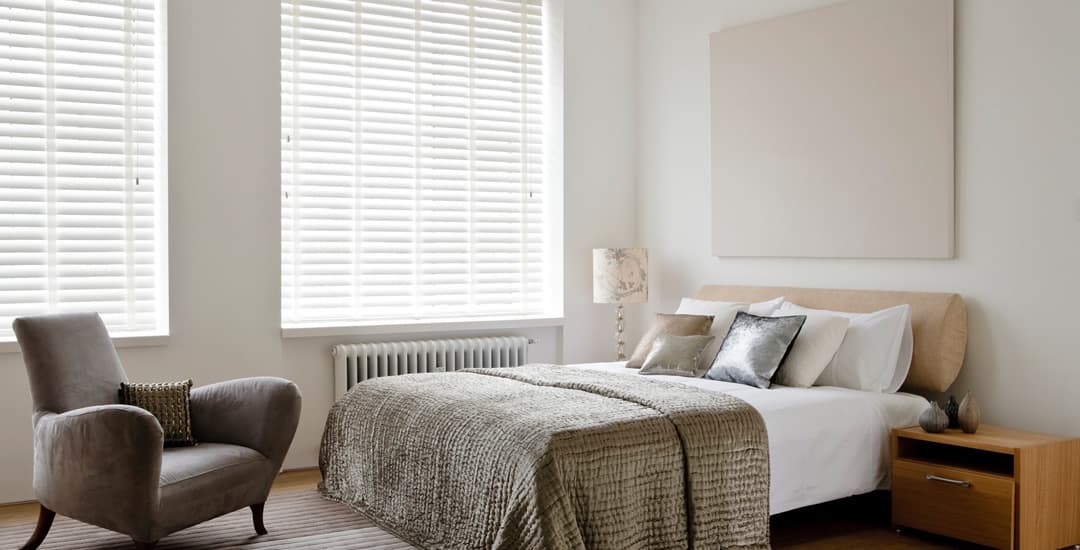
First up, good quality made-to-measure faux-wood blinds are designed to last, and so manufacturers like us use that aforementioned UV protective coating on them to ensure that they don’t suffer from a premature demise due to looking cosmetically fugly.
However, this is not always true of readymade faux-wood blinds, which are intended to survive for a far shorter lifespan; just two years being the baseline. This means that cheap, off-the-peg faux-wood blinds probably won’t have benefitted from the use of a UV coating to prevent yellowing; and so the first or best way to prevent blinds from yellowing is to start with good quality ones that will fight back against overly aggressive sunbeams!
When it comes to preventing blinds from yellowing by the other means I mentioned above; well, you can prevent them from yellowing due to nicotine staining by uh, not smoking around them! That said, if you do smoke in the comfort of your own home, being told by “that woman from the blinds place” not to do this is probably going to be irritating and unhelpful in equal parts.
Fair comment; my advice in this situation then is to pick a faux-wood blind in a darker shade that won’t make nicotine staining so glaringly obvious, and to wash/wipe the blinds off when you do your regular cleaning to remove any film of nicotine that might be developing before it becomes noticeable.
For faux-wood blinds in kitchens that become yellowed from cooking fats; maybe swap out your fries for salad? No? In which case again, wiping/washing them clean rather than simply dusting them will resolve the issue anyway.

